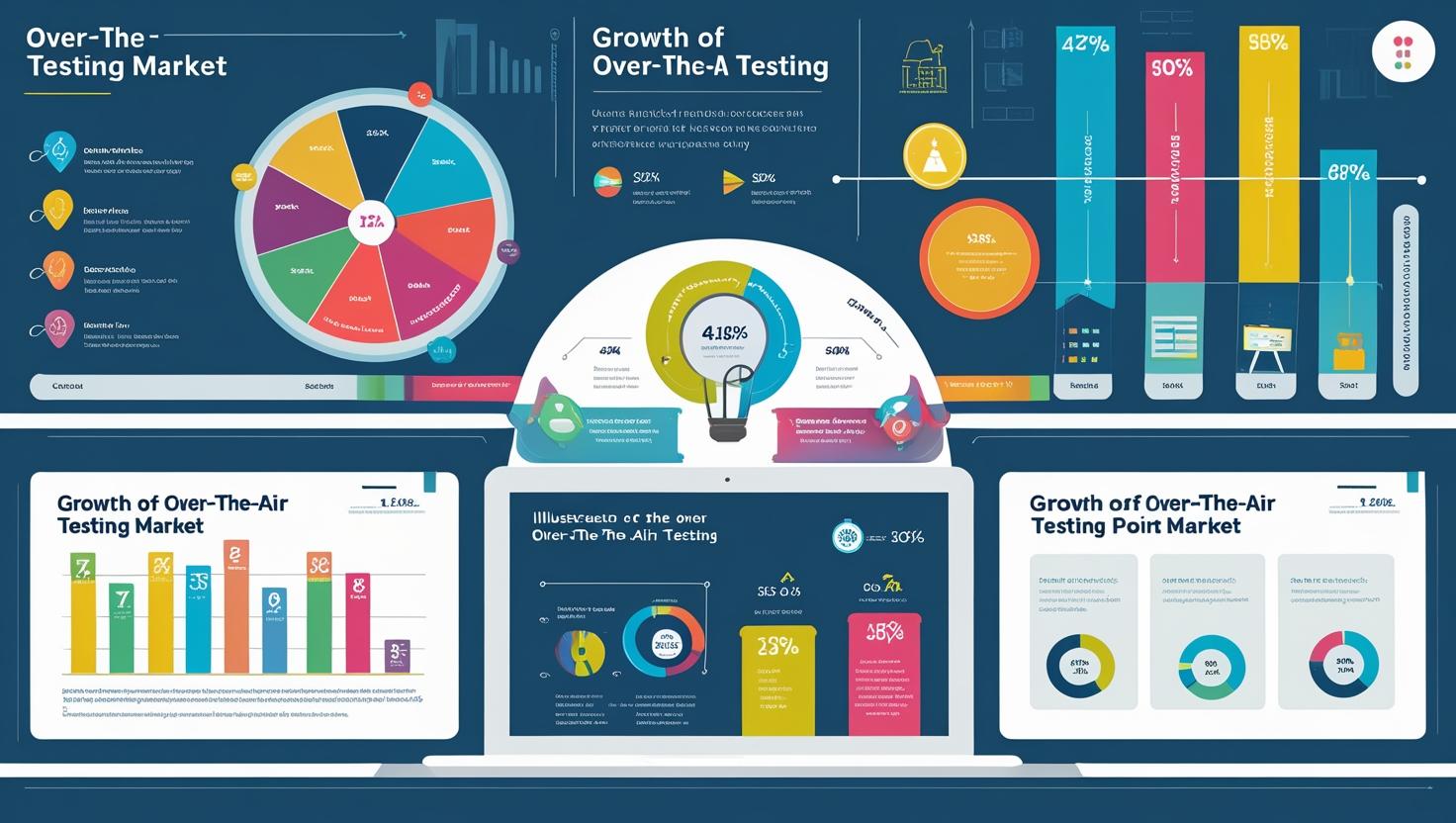As wireless technologies grow in complexity and ubiquity, the Over-the-Air (OTA) testing market is undergoing a major evolution. With the rise of 5G networks, the expansion of Internet of Things (IoT) ecosystems, and the upcoming implementation of Wi-Fi 7, device manufacturers and service providers are under increased pressure to ensure flawless wireless performance across a growing range of products. OTA testing has become a mission-critical component in validating wireless connectivity, performance, reliability, and user experience — all without physical connections.
The Role of OTA Testing in a Wireless World
OTA testing refers to the evaluation of wireless devices in simulated real-world conditions to assess their radio frequency (RF) performance. It includes tests for antenna effectiveness, throughput, latency, receiver sensitivity, and multiple-input, multiple-output (MIMO) efficiency. These tests are conducted in anechoic chambers or specialized lab environments that mimic complex signal conditions, interference, and spatial variations.
As wireless technologies advance, OTA testing becomes increasingly vital. Devices are now expected to maintain stable and fast connections in dynamic environments — whether it’s a smartphone streaming video on a subway or a connected vehicle communicating with traffic infrastructure in real-time.
5G Ushers in a New Era of OTA Complexity
The rollout of 5G is a key driver reshaping the OTA testing landscape. Unlike previous generations, 5G introduces millimeter-wave (mmWave) frequencies, massive MIMO, and beamforming technologies — all of which increase the complexity of RF design and validation.
5G devices must meet strict performance requirements across multiple frequency bands and modulation schemes. OTA testing ensures these devices can seamlessly switch between 4G and 5G networks, support higher data rates, and perform reliably in congested urban environments.
Network operators, OEMs, and chip manufacturers are investing heavily in new OTA testing solutions that can support 5G NR (New Radio) specifications and simulate real-world mobility scenarios, including handoffs between macro and small cells.
Download PDF Brochure @ https://www.marketsandmarkets.com/pdfdownloadNew.asp?id=168439990

IoT Growth Expands OTA Testing Applications
The proliferation of IoT devices — from smart meters and wearable tech to industrial sensors and smart home systems — is dramatically expanding the scope of OTA testing. Many of these devices operate in low-power, wide-area networks (LPWANs) and unlicensed spectrum, requiring testing for power efficiency, signal integrity, and network coexistence.
Unlike traditional mobile devices, IoT products often feature unconventional form factors and operate in challenging environments, such as underground locations, factories, or outdoors. This increases the need for tailored OTA testing protocols that account for their unique usage scenarios.
Additionally, the need for regulatory compliance and certification is pushing more companies to adopt automated, scalable OTA testing platforms to handle the growing volume and diversity of IoT products.
Wi-Fi 7 and the Next Wave of Wireless Innovation
The upcoming launch of Wi-Fi 7 (802.11be) marks another significant shift in the wireless landscape. With its promise of multi-gigabit speeds, lower latency, and support for new spectrum in the 6 GHz band, Wi-Fi 7 introduces advanced features like multi-link operation (MLO) and 320 MHz channel bandwidths.
These innovations will require entirely new OTA testing capabilities to validate performance under realistic, high-density, and high-throughput conditions. Test environments will need to evaluate how Wi-Fi 7 devices perform in scenarios involving simultaneous connections, interference from legacy Wi-Fi devices, and transitions between 5 GHz and 6 GHz bands.
For device makers and chipset vendors, effective OTA testing will be essential to ensure a smooth and standards-compliant rollout of Wi-Fi 7-enabled hardware.
Market Outlook and Competitive Landscape
The global OTA Testing Industry worth $3.17 billion by 2029. This expansion is driven by ongoing investments in wireless infrastructure, the growth of smart consumer devices, and stricter global standards for device certification.
Leading players in the OTA testing industry include Rohde & Schwarz, Keysight Technologies, Anritsu Corporation, National Instruments, and MVG (Microwave Vision Group). These companies are innovating rapidly, developing advanced test chambers, AI-powered automation, and cloud-based platforms to help clients accelerate time-to-market.
Emerging markets in Asia-Pacific, particularly China, South Korea, and India, are also boosting demand for OTA testing, as regional manufacturers ramp up production of 5G smartphones, IoT sensors, and connected vehicles.
Conclusion: OTA Testing Becomes a Strategic Necessity
As the wireless ecosystem becomes more advanced and interconnected, OTA testing is no longer a backend task — it’s a strategic imperative. From ensuring 5G reliability in urban canyons to validating IoT performance in smart factories and preparing for Wi-Fi 7 in ultra-connected homes, OTA testing is at the core of future-proofing wireless devices.
With the pace of innovation accelerating, companies that invest early in modern OTA testing infrastructure will be better positioned to meet regulatory standards, optimize user experiences, and compete in the next era of wireless connectivity.
FAQ: Over-the-Air (OTA) Testing Market and Its Role in Wireless Technology Evolution
Q1: What is Over-the-Air (OTA) testing?
OTA testing is a method used to evaluate the wireless performance of devices in a controlled environment that simulates real-world conditions. It measures parameters like antenna efficiency, signal strength, data throughput, and device interoperability without physical cables.
Q2: Why is OTA testing important for 5G devices?
5G technology introduces new frequencies like millimeter-wave and advanced features such as massive MIMO and beamforming. OTA testing ensures these complex wireless devices perform reliably across different network conditions, frequency bands, and mobility scenarios.
Q3: How does IoT impact the OTA testing market?
The surge in IoT devices, which operate in diverse environments and often on low-power networks, has expanded the scope of OTA testing. These devices require specialized tests for power consumption, signal reliability, and coexistence with other wireless technologies.
